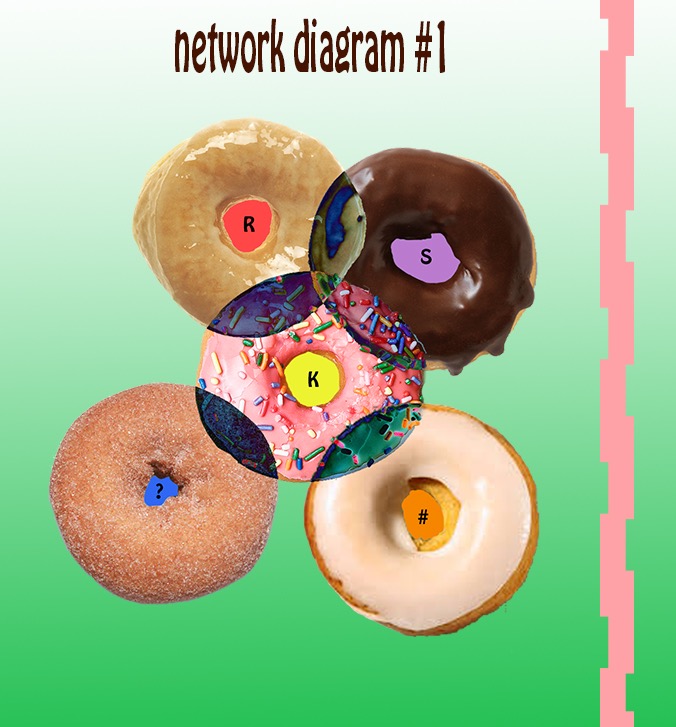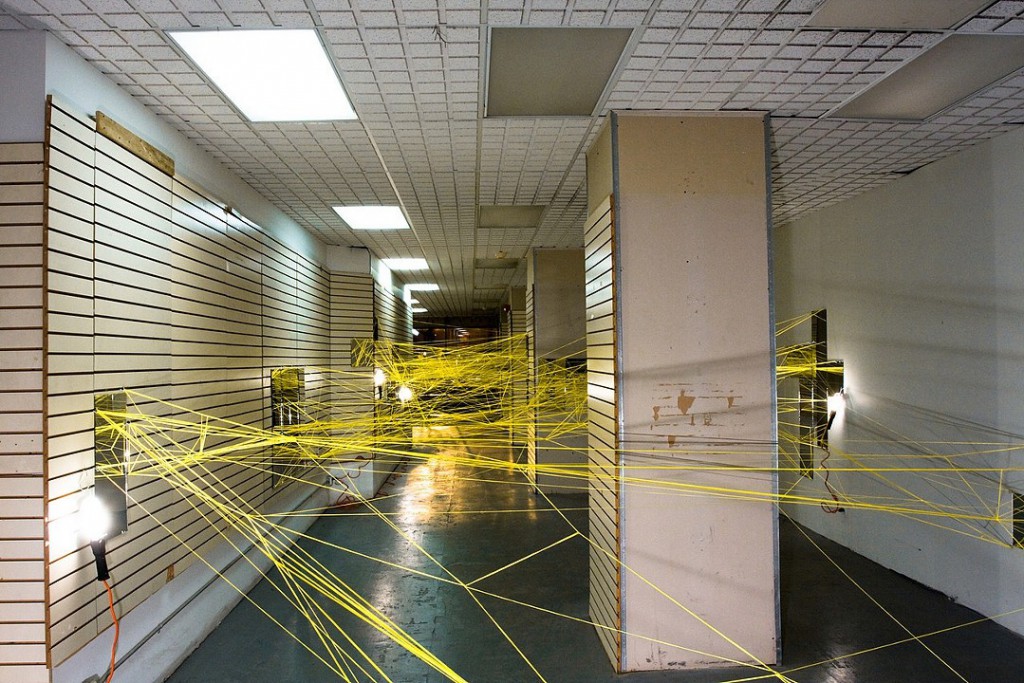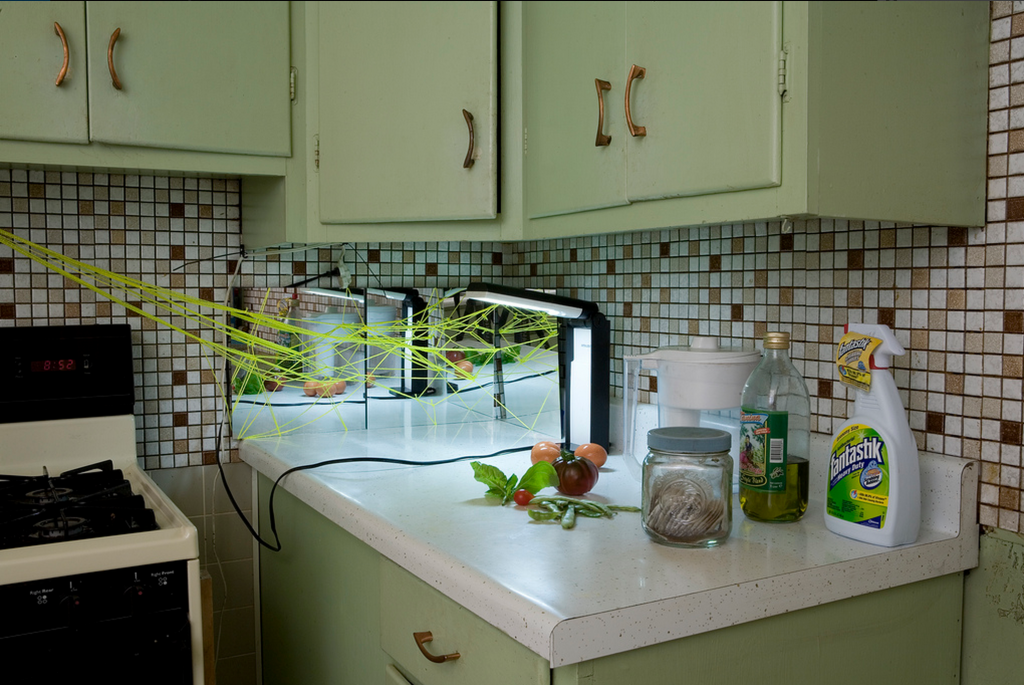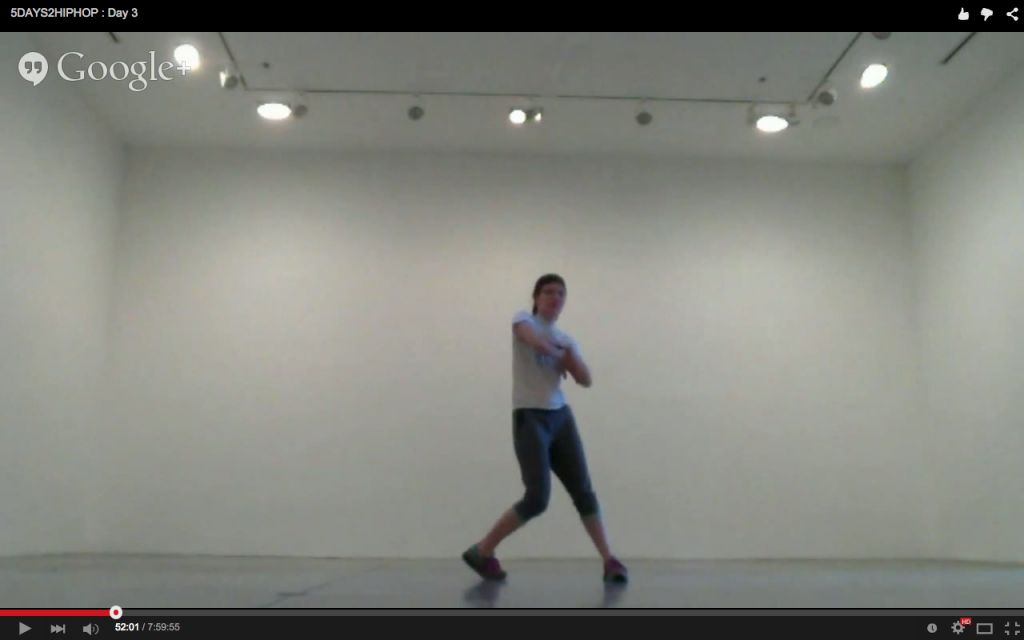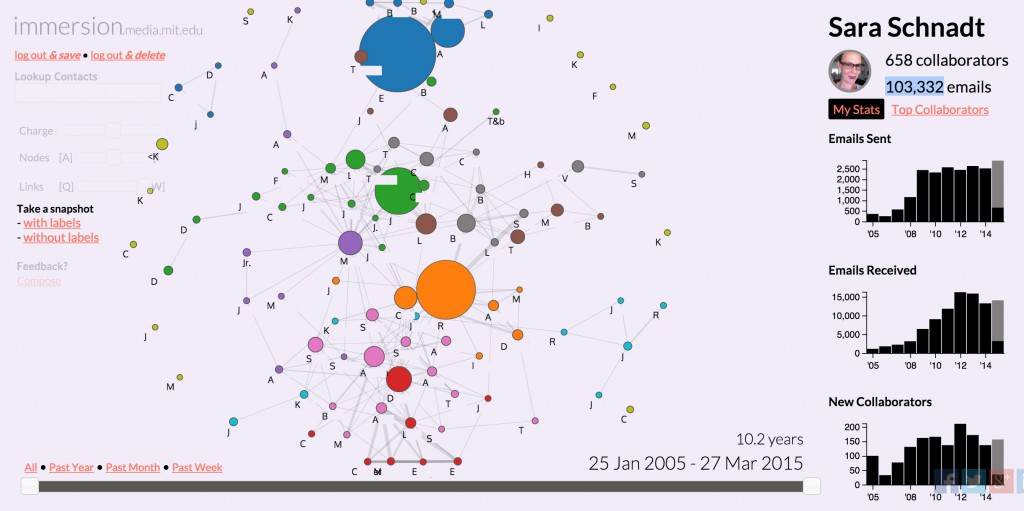
Sara Schnadt. My Email Community, 2015; anonymized visualization of 10 years of email interactions using MIT Media Lab’s Immersion Project. Courtesy of the artist.
Sara Schnadt and Kristy Baltezore met three years ago at the kitchen table of their mutual friend and fellow new-media artist Rob Ray, who is like a chosen family member. They define family in many ways, including people who will help with tasks for building one’s home and/or one’s art, who will witness one’s life in meaningful ways, and who will generally be there for the important things. Since then, Schnadt and Baltezore have discovered a shared interest in personal and societal networks based in technology—where they are authentic, where they are limited, and where there is potential for growth. Schnadt is interested in larger patterns in systems of relationships while Baltezore is interested in the personal connections, made one at a time, and the spaces between them. Their ongoing dialogue has become part of a project about digital-emotional space that they are developing with a number of collaborators, including Rob Ray. To discuss this, they formed and responded to a set of questions in the style of an interview.
What is the relationship for us between network structures and family?
Sara Schnadt (SS): I grew up in an international, intentional community in Scotland called Findhorn, so the idea of authentic social structures and multidirectional personal connections is close to home for me. I joined Facebook in 2007 when my brother convinced all the attendees of the first-ever “children of Findhorn” reunion to be part of a Facebook group. We participated in this group for several months to prolong the intense feeling of connectedness that we experienced, like long-lost siblings coming together from all over the world.
Since then, I have appreciated Facebook as a virtual version of the daily authentic and incidental interactions I used to have in the small, village-like setting of Findhorn. Facebook and Twitter also afford me the opportunity to notice serendipitous creative, philosophical, and intellectual connections without the bounds of geographic space, and these interfaces have made my senses of community and creative network wider, more nuanced, and without definitive edges.
Kristy Baltezore (KB): It’s interesting to me that, even though I grew up with just my immediate family (my mom and my brother), my sense of family is similar. My mom worked a lot when I was young, so I spent quite a bit of time with friends, neighbors, and cousins. I think, because of that, I have always gravitated toward having a wide network of meaningful relationships that I consider familial , despite no actual family relation.
As far as online relationships are concerned, I tend to be less willing to participate in online relationship building if I haven’t met the person in physical space. Most of the friends I have I met in person, and I’ve known them for years. They know my quirks; I know theirs. I can tell how they are, emotionally, by the sound of their voices or their postures. These things are hard to translate without bodies and voices in shared space and time.
How does the relationship between networks and personal space play out in our work?
SS: I am fascinated with the patterns of networks. This is both an abstract and an everyday interest. Recently I was working in my neighborhood café, and a friend pointed out that, by introducing three people to each other (with various mutual affiliations), I was creating a real-life version of one of my installations. Often my artworks visualize networks—sometimes personal, often about the structures of large virtual systems. My works are extremely “meta” and at the same time create direct, immersive, spatial experiences that are highly accessible. My video installation Network (2009) was created for a storefront in downtown Chicago, where the public observed the process; many people came in to talk to me as I was building it. A later version of Network took over a house for a month, where two artist-curators lived in and around it. It explored a question: What tensions arise between an elaborately crafted and lofty ideal (of, for example, technology, virtual space, or utopian social structures) and the realities of daily life?
KB: I think a lot about the spaces between ideas and people. My goal is to open spaces for myself and others, to be more vulnerable and emotionally engaged with the world. Lately, I’ve become obsessed with how the emotional and the spiritual play out in digital space. I often examine the relationship of bodies in time and space, using real-time live feeds that anyone can see or hear online toeing the line between public and private space. It’s important for me that I work in real time and that the activities in the video are happening live. The possibility for error and imperfection are everywhere, I think that creates the kind of precarious, immediate space I’m looking for. I am aware of the possibility of being watched at any moment, and I often refer to this by directly performing actions for the viewer, making a relationship with them through that vulnerability and risk.
I want my relationships to speak more than my words to who I am. I imagine this as a kind of dissolving of the self, into the sharespace between the self and other. I think the internet was intended as this kind of space, but it often misses the mark due to the constant push for communicative aerodynamics. The spaces that are passed over and discarded in the push for speed are what I’m looking for.

